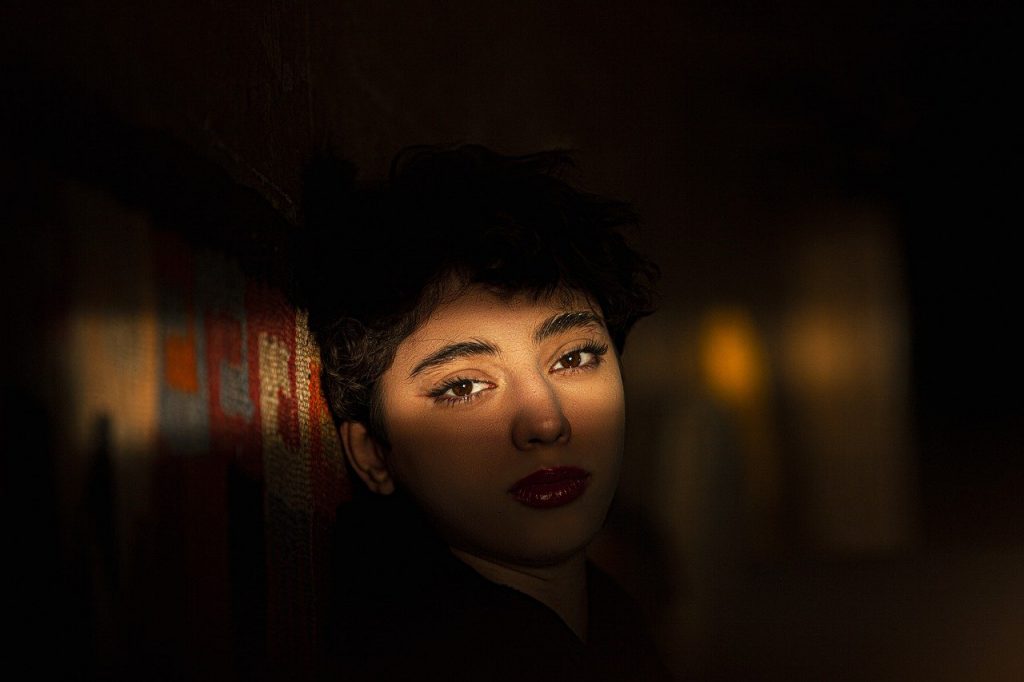
In today’s fast-paced digital world, the ability to capture attention through visuals is more critical than ever. With countless brands and individuals vying for the spotlight on social media, creating eye-catching visuals can be the difference between being overlooked and becoming a viral sensation. This blog post will explore essential techniques for crafting visuals that not only stand out but also resonate with your audience. We will delve into the art of asymmetrical compositions, the effective use of light and shadow, and the importance of building a cohesive brand palette. Throughout, we will also highlight how Sociobo can assist you in enhancing your social media presence through its unique services.
The Importance of Eye-Catching Visuals
Before diving into the specifics of creating standout visuals, it’s vital to understand why they matter. According to research, posts with compelling visuals receive 94% more views than those without. This statistic underscores the importance of investing time and effort into creating high-quality content that grabs attention. Furthermore, visuals can evoke emotions, convey messages quickly, and enhance brand recognition—making them an indispensable tool for anyone looking to establish a strong social media presence.

Crafting Asymmetrical Compositions
One effective way to create visually engaging content is through asymmetrical compositions. Unlike symmetrical designs, which can often feel predictable, asymmetrical layouts allow for a more dynamic and interesting visual experience. Here are some strategies for crafting asymmetrical compositions that can elevate your social media visuals:
1. Use the Rule of Thirds
The rule of thirds is a fundamental principle in visual design. By dividing your canvas into a 3×3 grid, you can strategically place key elements along the lines or at their intersections. This not only creates a balanced look but also draws the viewer’s eye to the most important parts of your composition. For example, if you’re showcasing a product, positioning it at one of the intersections can make it more prominent and appealing.
2. Employ Contrasting Colors and Sizes
Utilizing contrasting colors and sizes can add visual weight to your designs. For instance, placing a bold, vibrant element on one side of the composition can create a striking contrast with smaller, subdued elements on the opposite side. This technique not only enhances visual interest but also helps to guide the viewer’s attention where you want it most.
3. Incorporate Negative Space
Negative space—essentially the empty areas surrounding your subject—plays a crucial role in creating balance in asymmetrical compositions. By allowing for areas of emptiness, you provide the viewer’s eyes a place to rest, making the overall design feel more harmonious. For example, if you have a busy graphic, incorporating negative space can help to alleviate visual clutter and emphasize your main message.
4. Play with Visual Hierarchy
Visual hierarchy is all about guiding the viewer’s eye through your composition in a deliberate order. You can achieve this by manipulating size, color, and positioning. For instance, a larger, bolder headline can draw attention first, followed by smaller subheadings and body text. This approach not only improves readability but also ensures that your audience absorbs the information in the order you intend.
5. Experiment with Texture and Pattern
Adding varied textures or patterns can introduce depth and interest to your asymmetrical designs. For example, a smooth texture paired with a rough one can create a striking contrast that captures attention. This technique can be particularly effective in product photography or lifestyle shots, where the tactile quality of the image can evoke a stronger emotional response from the audience.
By incorporating these techniques into your social media visuals, you can create compelling content that stands out in crowded feeds. As you experiment with asymmetrical compositions, remember that balance is key. Don’t hesitate to iterate on your designs until you achieve the desired effect.
Leveraging Light and Shadow
Light and shadow are powerful tools that can dramatically enhance the visual impact of your content. The interplay between these elements can add depth, highlight important features, and create an emotional atmosphere. Here’s how to effectively leverage light and shadow in your visuals:

1. Understand the Basics
To master the use of light and shadow, start with a single, hard light source. This foundational knowledge will help you understand how light interacts with objects and creates shadows. For instance, positioning your light source at different angles can yield varying shadow effects, allowing you to create the mood you desire.
2. Use Shadows to Add Depth
Shadows can create a sense of three-dimensionality in your images, making subjects appear more realistic and engaging. This technique is particularly useful in product photography, where depth can enhance the perceived value of your items. For example, a well-placed shadow can make a product look more substantial and appealing to potential buyers.
3. Direct Attention
Strategically placed shadows can guide the viewer’s eye to key elements in your composition. For instance, if you want to emphasize a specific feature of a product, using shadows to frame that feature can draw attention and create a focal point. This technique is especially effective in social media posts where you want to highlight a unique selling proposition.
4. Create Mood and Atmosphere
The quality of light and shadow can dramatically affect the emotional tone of an image. Soft, diffused light can create a gentle, approachable mood, while harsh shadows can add drama or mystery. For example, a lifestyle shot taken during the golden hour—when the light is soft and warm—can evoke feelings of nostalgia and warmth, making it more relatable to your audience.
5. Experiment with Light Modifiers
Light modifiers such as reflectors, diffusers, and snoots can shape and redirect light, allowing you to craft precise shadow effects. These tools give you greater control over the final look of your visuals, enabling you to achieve the desired mood and depth. For example, using a diffuser can soften harsh light, creating a more flattering image.
6. Consider Secondary Light
Be aware of how light bounces off surfaces, creating secondary light sources that can soften shadows and add nuance to your images. This technique can help create a more balanced composition and prevent harsh contrasts that might detract from your message.
7. Play with Contrast
High contrast between light and dark areas can create bold, eye-catching visuals that stand out in crowded social media feeds. However, it’s essential to remain mindful of your overall brand aesthetic when using this technique. For instance, if your brand identity is rooted in minimalism, excessive contrast might clash with your visual style.
Mastering the use of light and shadow requires practice and experimentation. As you develop your skills, you’ll be able to create more sophisticated and visually appealing content that captures attention and enhances your brand’s presence on social media platforms.
Building a Brand Palette
A cohesive brand palette is crucial for establishing a strong visual identity across your social media channels. A well-crafted color scheme not only enhances brand recognition but also evokes specific emotions that resonate with your audience. Here’s how to create an effective brand palette:

1. Start with Your Brand Strategy
Before selecting colors, it’s essential to define your brand’s personality, values, and target audience. Your color choices should align with these elements to ensure that your palette resonates with your brand identity. For example, a brand that emphasizes trust and professionalism might gravitate toward blues and greens, while a vibrant, youthful brand might opt for bold, playful colors.
2. Create a Mood Board
Collecting images, textures, and color swatches that represent your brand’s aesthetic can serve as a valuable reference during the color selection process. A mood board helps maintain consistency and provides inspiration as you develop your visual content.
3. Choose a Base Color
Select a primary color that best represents your brand. This color will serve as the foundation of your palette and should be used prominently in your visuals. For instance, if your brand is associated with sustainability, a green base color can effectively communicate your values.
4. Develop a Color Scheme
Build upon your base color by selecting complementary, analogous, or triadic colors. Aim for a balanced palette with 3-5 colors that work well together. This cohesive color scheme will help create a recognizable visual identity across all your social media platforms.
5. Consider Color Psychology
Understanding the emotional associations of different colors can significantly impact how your audience perceives your brand. For example, red can evoke excitement and urgency, while purple often conveys luxury and sophistication. Be mindful of these associations when selecting your brand colors.
6. Test Your Palette
Before finalizing your color choices, apply them to various design elements and test them in different contexts. This step ensures that your palette works well together and maintains legibility across different platforms and devices.
7. Define Color Usage Guidelines
Establish rules for how each color in your palette should be used across different applications, including primary, secondary, and accent colors. This consistency will help reinforce your brand identity and make your visuals instantly recognizable.
8. Use Tools and Resources
Leverage color palette generators and design tools to explore different color combinations and find inspiration for your brand palette. Resources like HubSpot’s free color palette generator can help you discover effective color schemes that align with your brand identity.
By carefully crafting your brand palette, you’ll create a strong foundation for visually cohesive and memorable social media content that reinforces your brand identity. Creating visuals that stand out in the feed is essential for capturing audience attention and driving engagement. By employing techniques such as asymmetrical compositions, leveraging light and shadow, and building a cohesive brand palette, you can craft compelling visual content that resonates with your audience.
At Sociobo, we understand the importance of a strong social media presence. Our exclusive program leverages social proof aggregation to enhance your brand’s visibility and authority on platforms like Instagram, TikTok, YouTube, Facebook, and Spotify. By utilizing our services, you can attract genuine followers and improve your overall social media performance.
If you’re ready to take your social media visuals to the next level, consider exploring Sociobo’s offerings. With our expertise in boosting engagement and credibility, we can help you create a powerful online presence that stands out in today’s competitive landscape. Visit Sociobo.com to learn more about how we can support your journey toward social media success.






No comment yet, add your voice below!